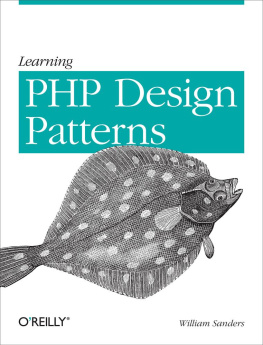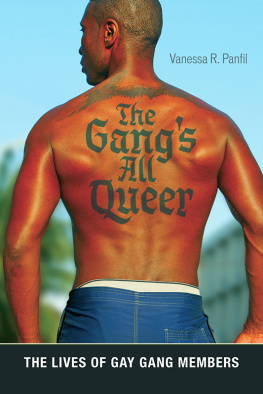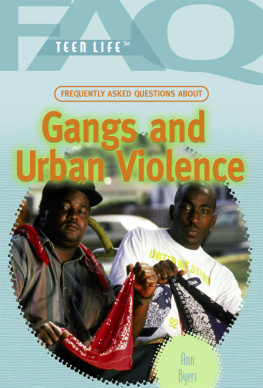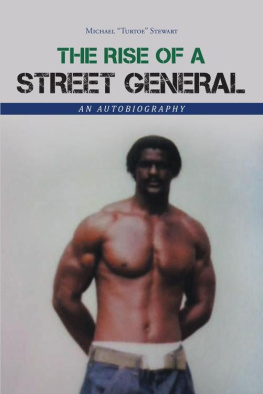
GANGBANGS AND DRIVE-BYS
SOCIAL PROBLEMS AND SOCIAL ISSUES
An Aldine de Gruyter Series of Texts and Monographs
SERIES EDITOR
Joel Best
Southern Illinois University at Carbondale
Joel Best (editor), Images of Issues: Typifying Contemporary Social Problems
Joel Best (editor), Troubling Children: Studies of Children and Social Problems
James A. Holstein, Court-Ordered Insanity: Interpretive Practice and Involuntary Commitment
James A. Holstein and Gale Miller (editors), Reconsidering Social Constructionism: Debates in Social Problems Theory
Gale Miller and James A. Holstein (editors), Constructionist Controversies: Issues in Social Problems Theory
Philip Jenkins, Intimate Enemies: Moral Panics in Contemporary Great Britain
Philip Jenkins, Using Murder: The Social Construction of Serial Homicide
Valerie Jenness, Making It Work: The Prostitutes Rights Movement in Perspective
Stuart A. Kirk and Herb Kutchins, The Selling of DSM: The Rhetoric of Science in Psychiatry
Bruce Luske, Mirrors of Madness: Patrolling the Psychic Border
Leslie Margolin, Goodness Personified: The Emergence of Gifted Children
Dorothy Pawluch, The New Pediatrics: A Profession in Transition
William B. Sanders, Gangbangs and Drivebys: Grounded Culture and Juvenile Gang Violence
Wilbur J. Scott, The Politics of Readjustment: Vietnam Veterans since the War
Wilbur J. Scott and Sandra Carson Stanley (editors) Gay and Lesbians in the Military: Issues, Concerns, and Contrasts
Malcolm Spector and John I. Kitsuse, Constructing Social Problems
GANGBANGS AND DRIVE-BYS
Grounded Culture and Juvenile Gang Violence
William B. Sanders
ABOUT THE AUTHOR
Wiliam B. Sanders is Professor of Sociology and Associate Dean, College of Liberal Arts, University of Texas, El Paso. Dr. Sanders began studying gangs in San Diego, Great Britain, and El Paso during the 1980s. He has published Detective Work (a C. Wright Mills Award Nominee), Rape and Womens Identity, and eight other books in sociology.
First published 1994 by Transaction Publishers
Published 2017 by Routledge
2 Park Square, Milton Park, Abingdon, Oxon OX14 4RN
711 Third Avenue, New York, NY 10017, USA
Routledge is an imprint of the Taylor & Francis Group, an informa business
Copyright 1994 by Taylor & Francis.
All rights reserved. No part of this book may be reprinted or reproduced or utilised in any form or by any electronic, mechanical, or other means, now known or hereafter invented, including photocopying and recording, or in any information storage or retrieval system, without permission in writing from the publishers.
Notice:
Product or corporate names may be trademarks or registered trademarks, and are used only for identification and explanation without intent to infringe.
Library of Congress Cataloging-in-Publication Data
Sanders, William B., 1994
Gangbangs and drivebys : grounded culture and juvenile gang violence / William B. Sanders.
p.cm. (Social problems and social issues)
Includes bibliographical references and index.
ISBN 0-202-30536-8 (alk. paper). ISBN 0-202-30537-6 (pbk.)
1. GangsCalifornia. 2. ViolenceCalifornia. 3. Juvenile delinquencyCalifornia. 4. Gang rapeCalifornia. 5. Juvenile justice, Administration ofCalifornia. I. Title. II. Series.
HV6439.U7C261994 |
302.34dc20 | 93-50050 |
CIP |
ISBN 13: 978-0-202-30537-0 (pbk)
This book is dedicated to Bill Campbell and John Davis, two friends who encouraged me in every way.
CONTENTS
Anyone who has studied gangs over a period of time will admit that the more one studies them, the more complex they are. At best, we can come to understand a bit about certain features of gangs at given points in time. Gangs are dynamic, flexible, and ever-changing. At the same time, they have certain features that transcend gang cohorts and even generations, giving them permanent features. Gang violence is the feature of interest in this book.
In order to put together data that were gathered over a period of twelve years, it was necessary to organize the book into digestible chapters. The beginning, is a single chapter describing how the police attempt to deal with the gangs. Since the police constitute the nexus between society and crime, they not only serve as a major social control agency, they are instrumental in defining what is and is not a gang and gang incident. As such their procedures are important to understand in the context of their societal role and interaction with gangs. An Appendix rounds out the book with a description of the methodology used.
There are several people who helped out immensely in getting this book completed. Those who helped in collecting data included police, research assistants, and even some current and former gang members; so Ill just mention a lot of people whose specific affiliation will be left unstated so as not to upset anyone who wants to remain professionally anonymous. Sine the data-gathering process spanned over a decade, I may have forgotten some key people, and I hope they will understand. William Campbell, Jose Broz, William Howell, Tamara Plak, and Paul Salamando were most helpful in this respect.
Fellow sociologists at San Diego State University and the University of Texas at El Paso also assisted in one way or another. I am especially grateful to Jim Wood and Kenji Ima at SDSU. Howard Daudistel and Fernando Rodriguez at UTEP provided helpful suggestions as well. At Cambridge University, Richard Wright provided some needed introductions. Likewise, other faculty at the Institute of Criminology at Cambridge helped as well. One such contact they provided was Jimmy Boyle, who gave me some needed insights into the gangs that once existed in the Gorbals in Glasgow, Scotland.
Joel Best at Southern Illinois University did his utmost to help me reorganize, untangle, and clarify what I was trying to accomplish. His efforts were appreciated in the long run, and Im glad nobody saw the book before his suggestions were incorporated. Likewise, Richard Koff-ler and Arlene Perazzini at Aldine de Gruyter were most supportive and helpful. But as in all such projects, the deficiencies must remain the responsibility of the author.
It was a typical fall evening in San Diego, cool and comfortable. A young man and his girlfriend were sitting in his car, a private place away from their families. The area, called Del Sol, is a subdivision just north of San Ysidro not too far from the border. North of Del Sol is Otay and Las Palmas, and Imperial Beach is to the west, right on the ocean. In the gerrymander that is San Diego, the city limits stop to the north of Otay where Chula Vista and National City insert themselves along Interstate 5 (I-5, to the locals) before the city of San Diego starts up again in areas called Shelltown and Paradise Hills.











